Monkfish may possibly be the ugliest fish in the world.
I mean, just look at it.
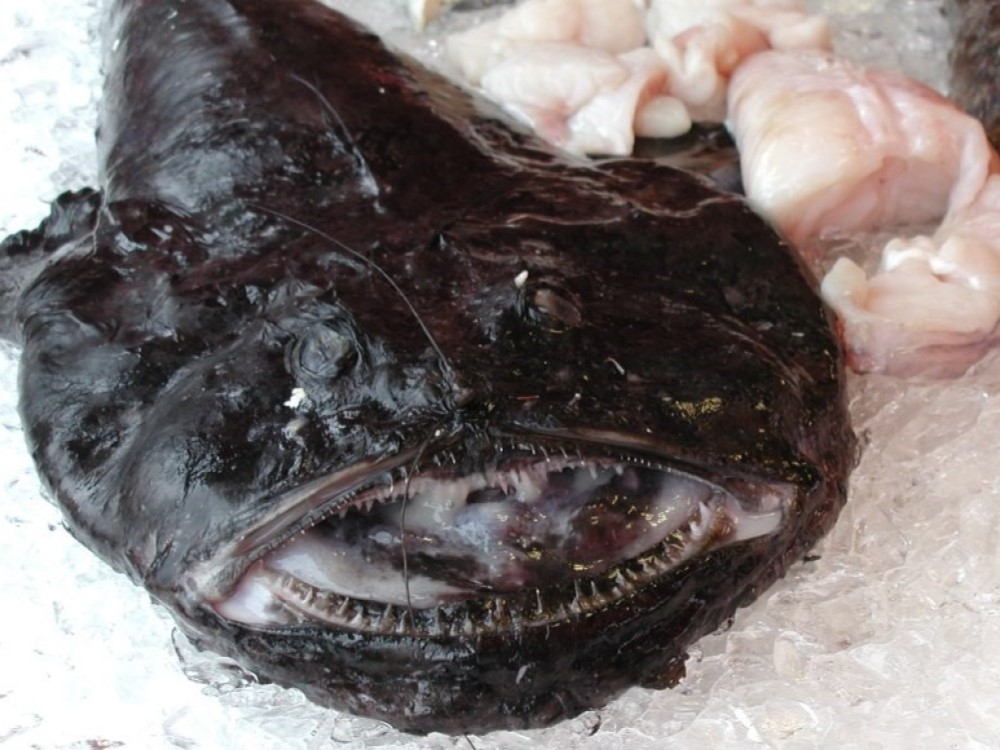
There must have been countless fishermen who’ve caught one and immediately tossed it back into the sea. That is, until one brave soul decided: “Hmm… that looks like it might actually be quite nice to eat.”
And I cannot thank that adventurous fisherman enough.
The first time we had monkfish was in an amazing seafood stew at a tapas bar in San Sebastian. It was firm, meaty and full of flavour. Since then, we’ve been on a lookout for dishes that feature the ugly delicious fish.
As luck would have it, it’s quite popular in Korea and we just happened to be there on vacation. There’s even an entire street in Seoul dedicated to restaurants serving agujjim, or spicy braised monkfish.
Simply take the train to Jongno 3-ga station on Line 5 of the metro, take the escalator up to Exit 4, cross the street, turn left, walk to the next intersection and it’ll be on your right.
There were so many restaurants to choose from, and after walking up and down the street to scout out the offerings, we finally decided on Masan Seafood No.1 Branch. The shop has been around since 1989 and was even featured on an SBS food show.
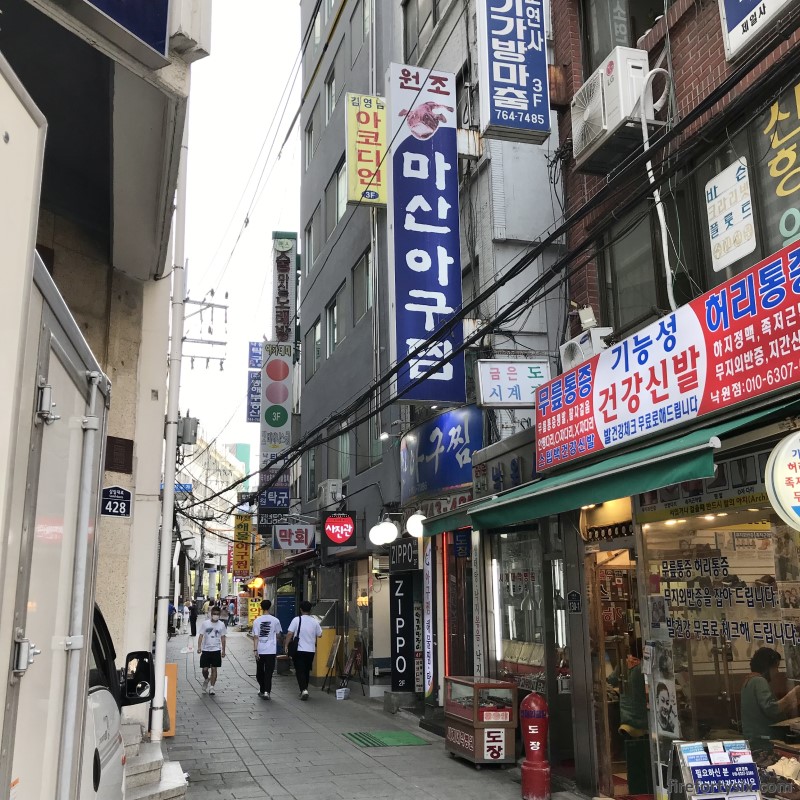
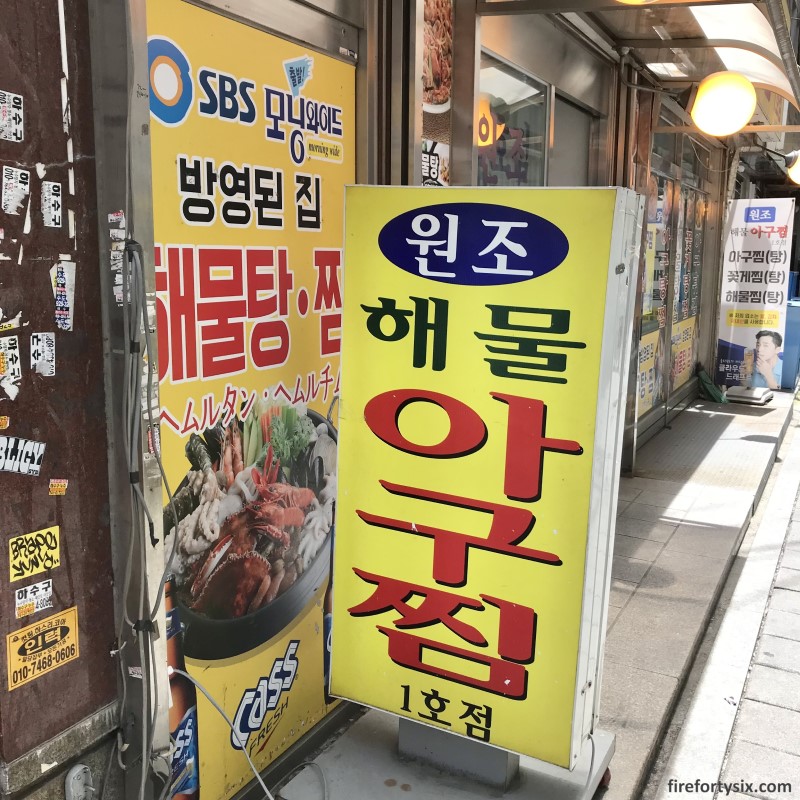
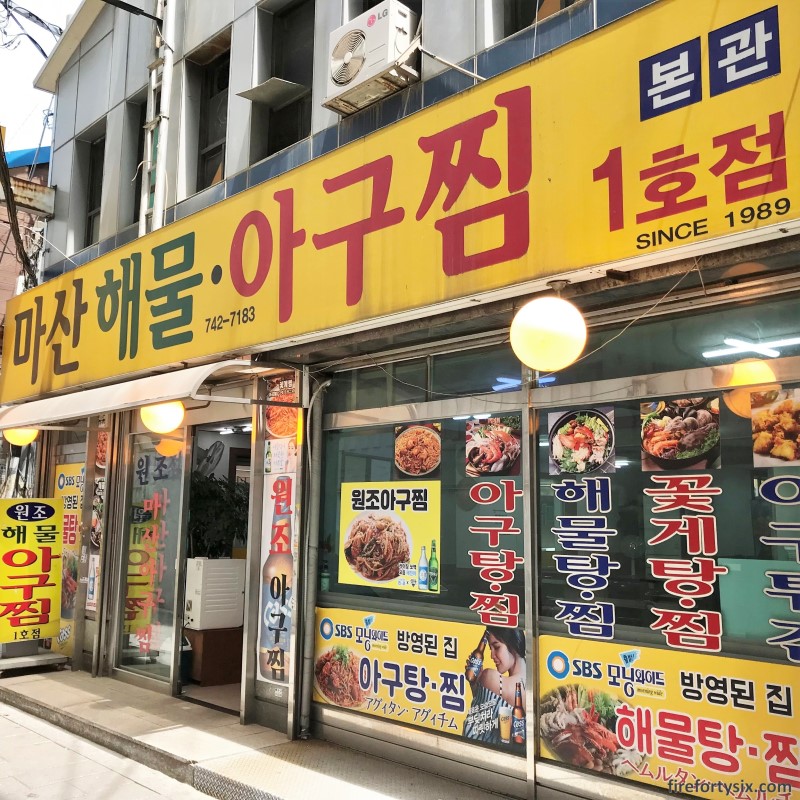
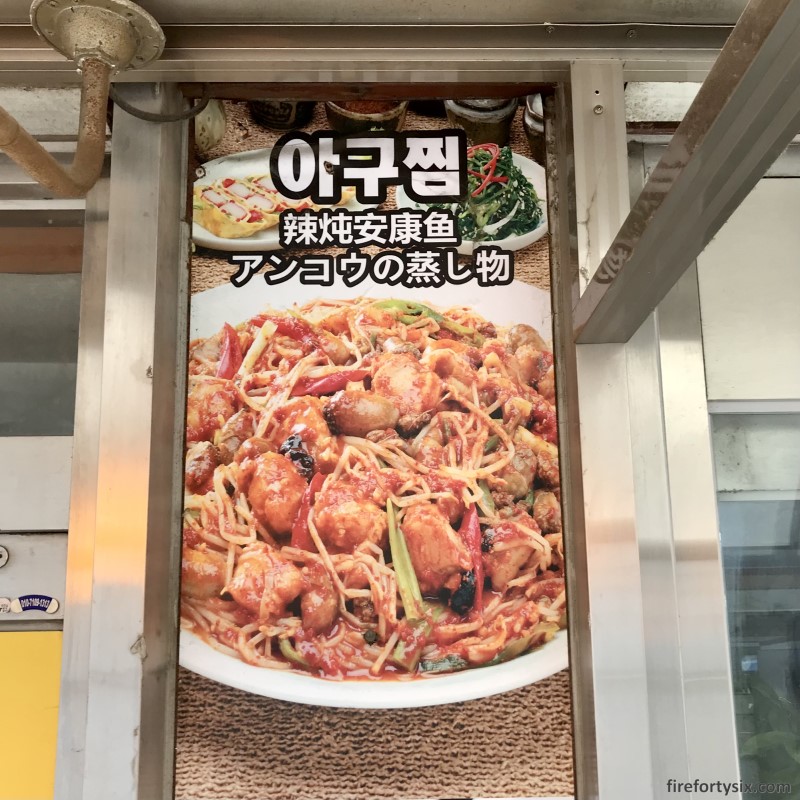
We walked in at 11:30am and were the only customers there. The dining area was bright and open, with numerous large tables spaced widely apart. There were only two people working in the restaurant at the time, presumably a husband and wife team who were respectively in-charge of cooking and service.
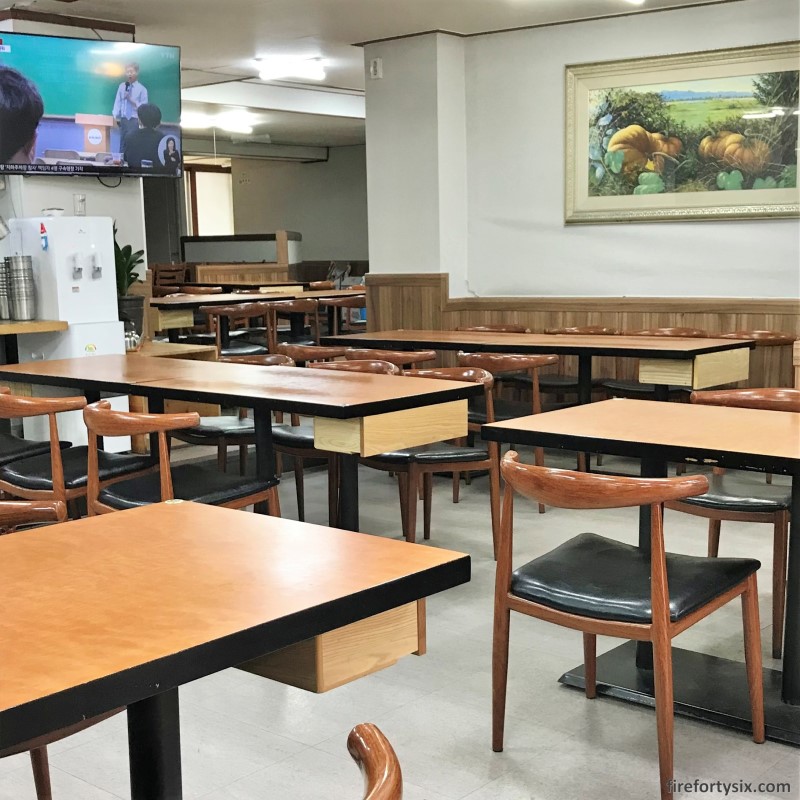
The menu was prominently displayed on the wall and comprised of only three items: spicy braised monkfish, spicy braised seafood and seafood & green onion pancake. The two braised items came in large, medium and small portions that were priced on a nett basis i.e. not per person.
Customer photos that I saw on Naver Maps reviews featured very substantial servings. So, despite discovering a monkfish paradise, we decided to play it safe and ordered a small portion to share between the two of us.
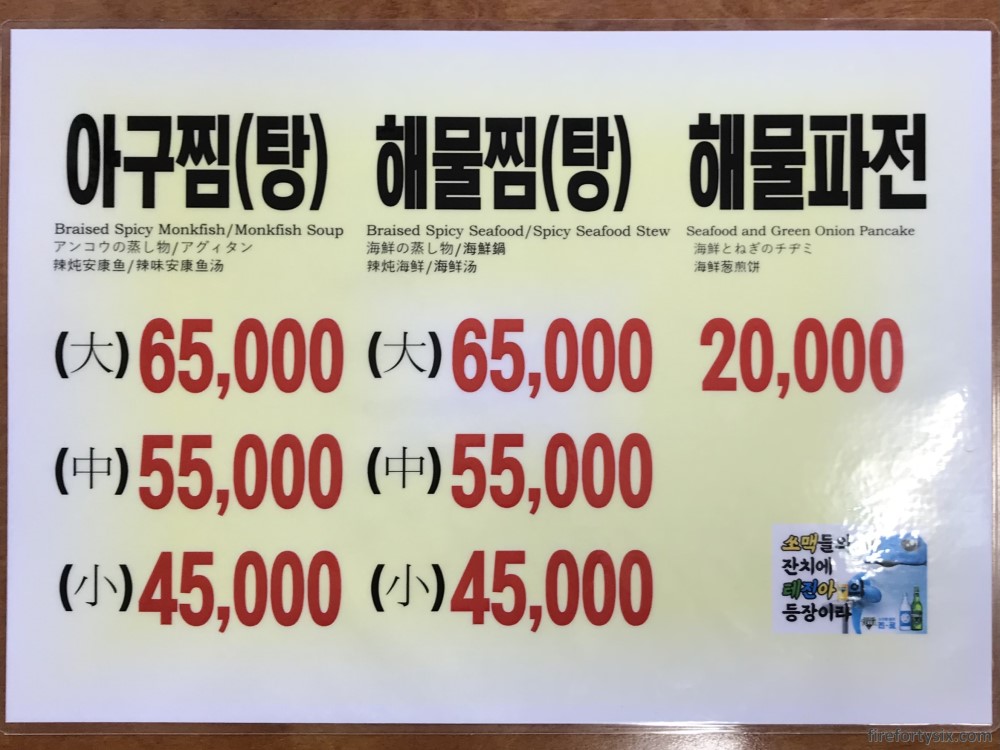
The lady sajangnim placed an order sheet on our table, and seeing that we had whipped out our mobile phones and launched the Papago app, she gave us ample time to run it through the real-time image translation function.
In addition to the first three items, which were already featured on the wall menu, there were several lines of what we assumed were various types of alcohol.
We had absolutely no clue what “The order of sales”, “Hundred years state” and “Your excellency” could have been, but we saw exactly what we wanted to order — Makgeolli. Japanese sake is our current beverage of choice, but when in Korea, we had to drink makgeolli.
It was selling at a ridiculously cheap price (by Singapore standards) of only ₩4,000. I realised, then and there, that we’d be in a constant state of blissful marination throughout our entire trip.


The last line item — “fried rice” — also looked interesting. Based on numerous K-dramas and food shows we’ve watched, it would most likely be made using a portion of the agujjim and was definitely something that we had to order.
I waved cheerfully at the sajangnim and pointed to her the items that we wanted. After writing them down, she started speaking to us in Korean. I whipped out my mobile again, activated the Papago conversation mode and pointed the mic to her.
She must have encountered this many times by now, and knew exactly what to do. After speaking slowly and clearly into the phone, she checked that it had correctly captured what she said and gave me a slight nod of the head.

We smiled back at her and replied with a simple “Ok!”, followed by the universally-understood hand signal to confirm that yes, we could indeed handle the spiciness.
Usability-wise, Papago isn’t quite as smooth as the Star Trek universal translator, but it does have the advantage of being a real thing. We used it extensively during our trip, and managed to communicate with the locals, albeit haltingly.
Banchan was served, and besides the ubiquitous kimchi, there was corn cheese and a plate of blanched cabbage and seaweed. Which we were told to dip into the accompanying dish of salted anchovies.
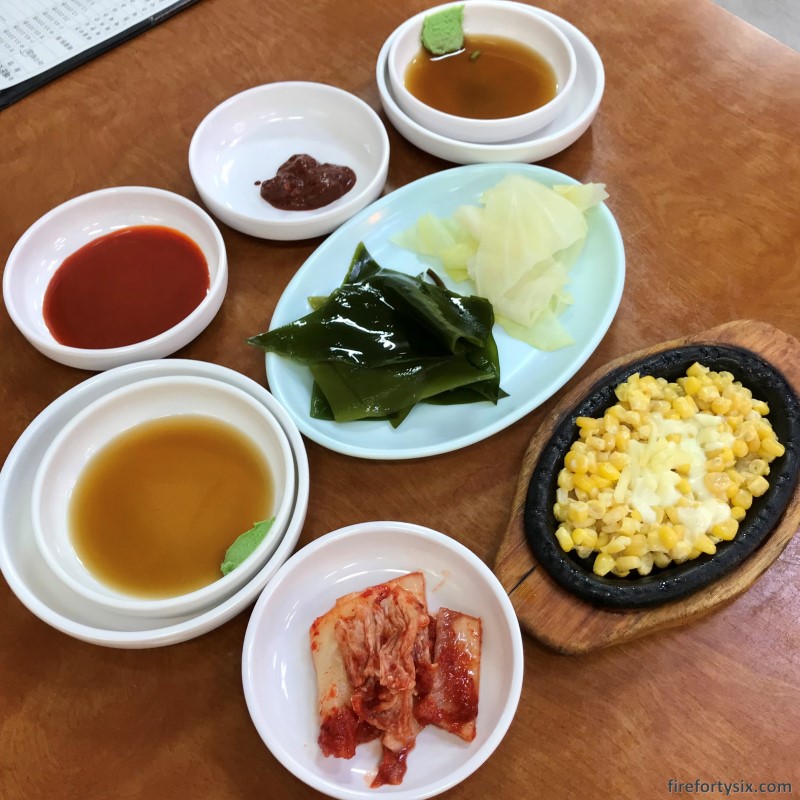
Compared with other restaurants we visited during our trip, the banchan was decidedly sparse, but it did its job of getting our palates ready for the meal to come.
But first, makgeolli.
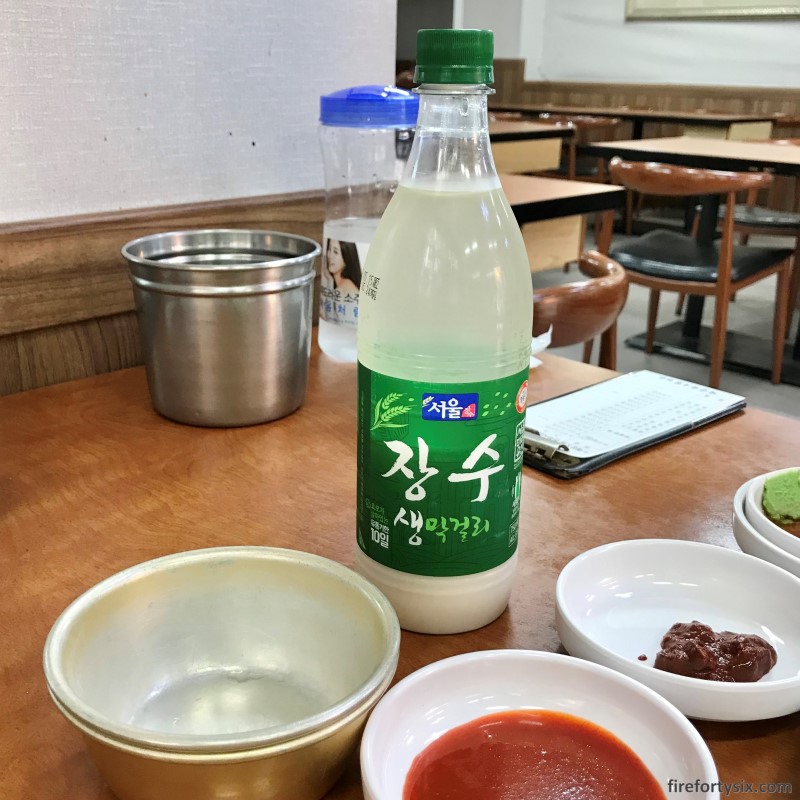
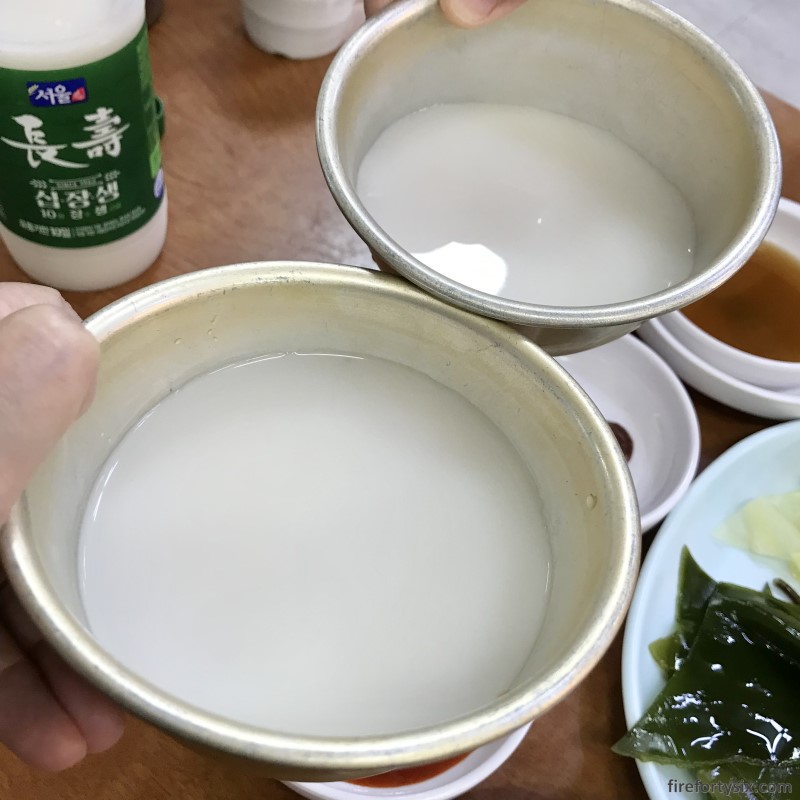
As we were the only customers, our main course didn’t take long to arrive. When it first came out of the kitchen, the size of the plate surprised us. Actually, platter would have been a more accurate description.
And it wasn’t just the length and width of the serving. The mound of braised monkfish and beansprouts was also impressively tall. When it was placed in the centre of our table, we did a double take and asked if it was indeed the small size that we had ordered.
Sajangnim flashed us a smile and confirmed that indeed it was. I was glad that we went the conservative route and didn’t foolishly order the large portion.
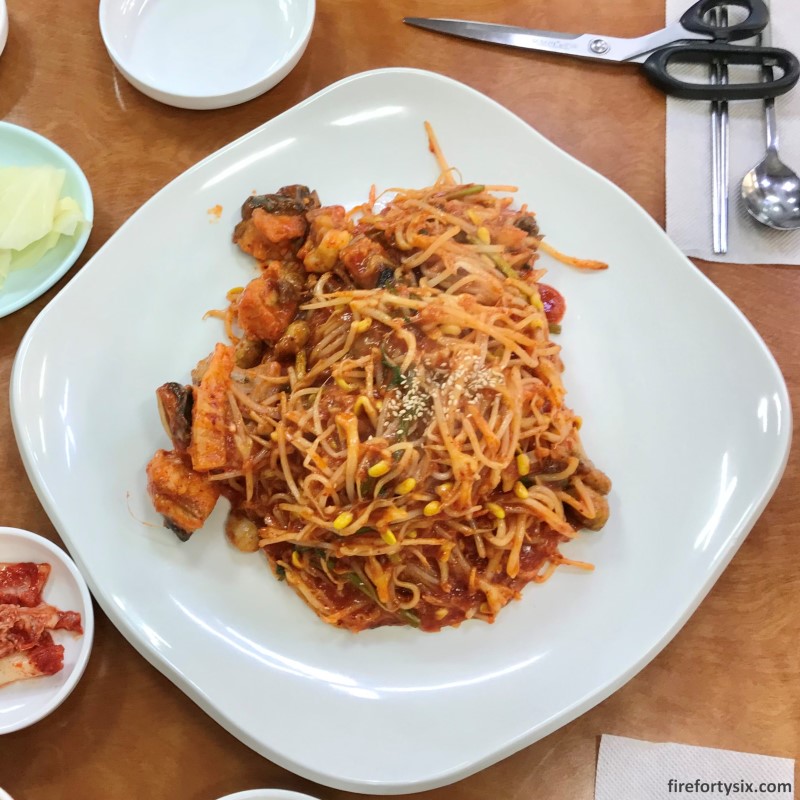
After getting over the shell shock, we finally dug in and started tackling the mountain of food in-front of us. Even before taking a single bite, we could already tell how it would taste.
Spicy from the lava red gochujang braising liquid, crunchy from the heaping amount of kongnamul and chewy from the generous chunks of agu.
The monkfish was as firm and tasty as we remembered.
Even though each piece came with a coating of the powerful sauce, the natural taste of the fish managed to hold its ground and asserted itself the more it was chewed. Especially the pieces that came with more skin and cartilage.
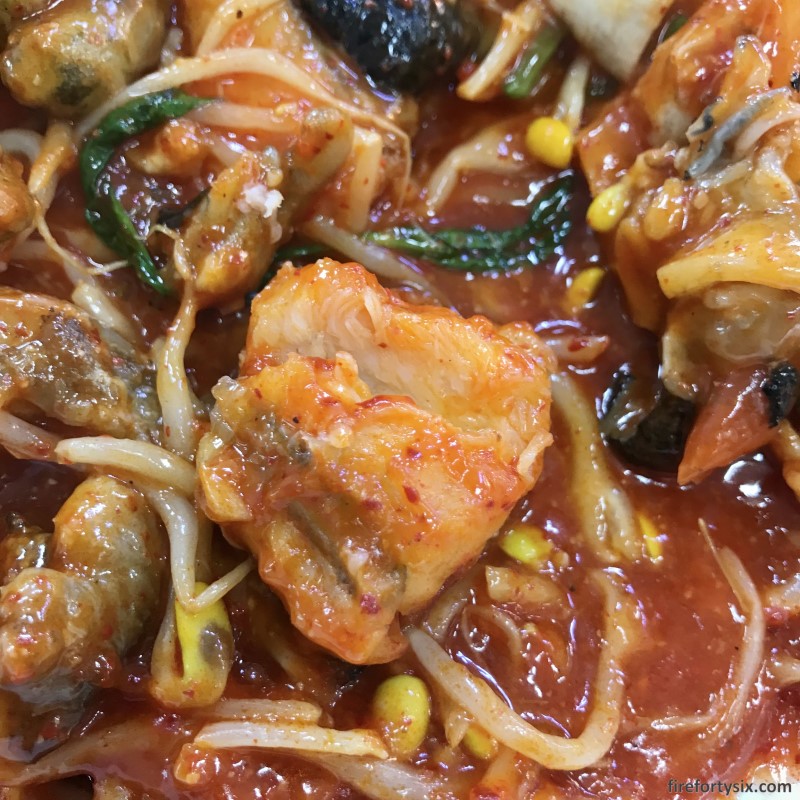
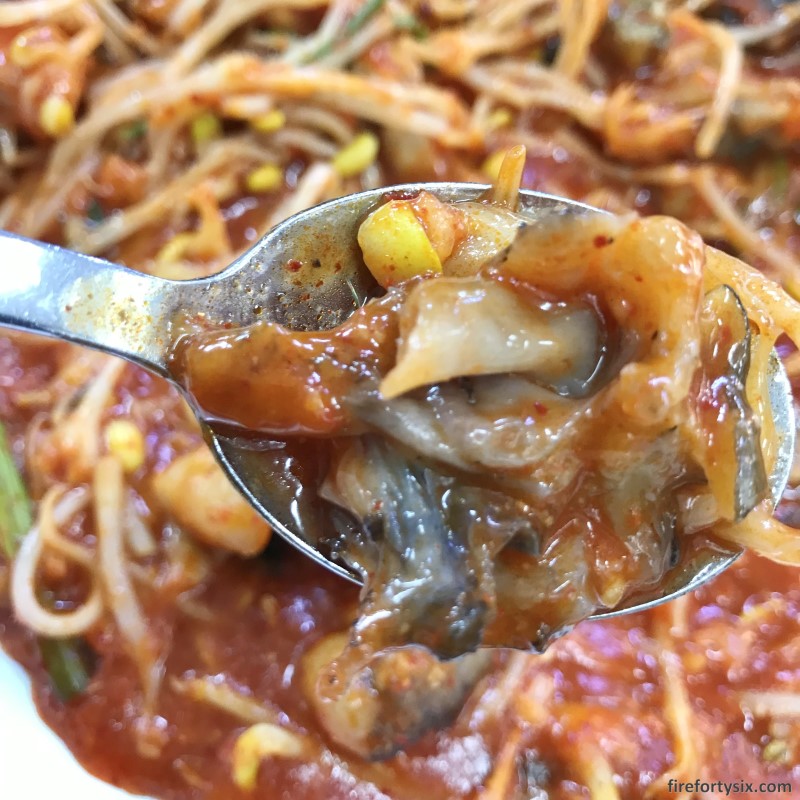
There were also these hard oval-shaped pieces which I initially thought were eyeballs, but there were too many of them to be practically possible. As much as we tried, we couldn’t figure out what they were and reached out to the resident expert for help.
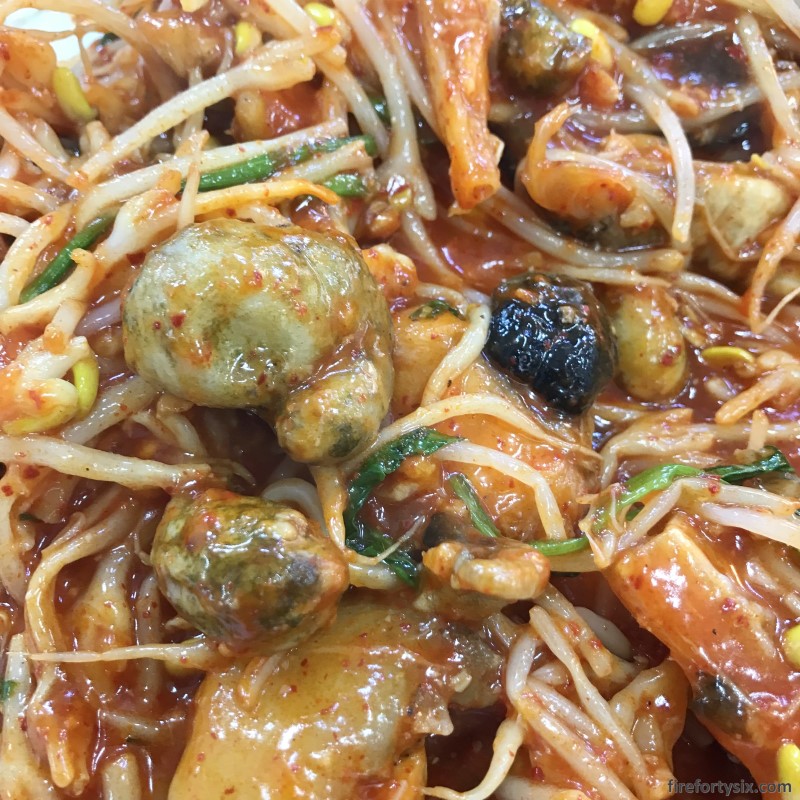
Through the power of technology, she informed us that they were a kind of sea squirt. While it sounded quite exotic and we were game to give it a go, they were simply too hard for us to bite through. We didn’t want to risk our fragile teeth and left them on the plate.


The makgeolli that was served was more acidic and citrusy than the creamy versions that we normally drink, but it was exactly that flavour profile that matched the heavily-seasoned agujjim. If you’re not a fan of rice wine, then beer would work equally well.
We knew that we wouldn’t be able to finish all the food, but we persevered gave it our best shot. Upon reaching the final lap, we asked for the fried rice to be made.
The lady boss came over with an empty bowl, scooped out a sizeable chunk of the monkfish stew and brought it back to the kitchen. About ten minutes later, she returned with the finished product.
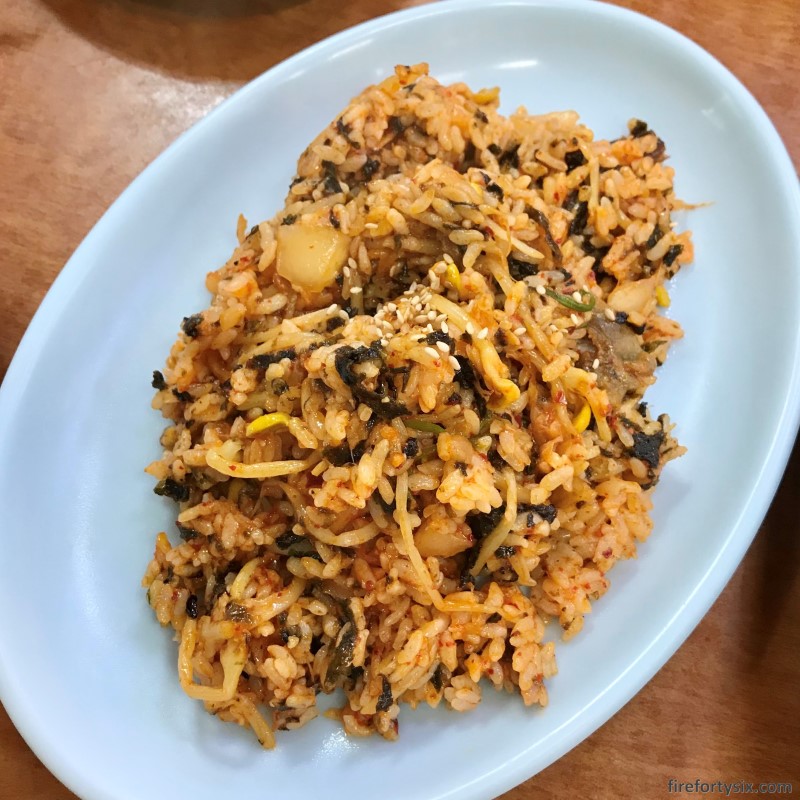
We had expected it to be more cooked, with crunchy bits of overcooked rice, but it was tasty nonetheless. The rice had absorbed all the essence from the braising sauce, and just in case that wasn’t enough, we drizzled on even more to maximise the flavour.
By then, the lunch crowd had started coming in. They were all ajummas and ajusshis who were older than us by at least a few decades. No tourists (except us, that is), no office workers grabbing a quick lunch and no young folks taking Instagrammable food photos.
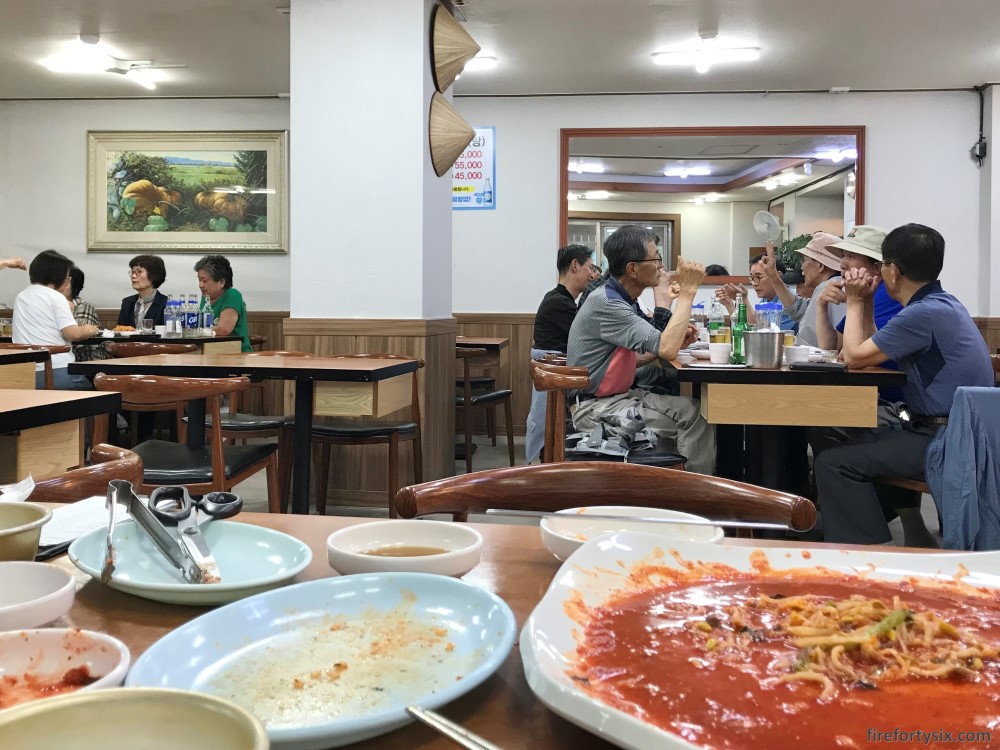
Besides ordering heaping amounts of food, they were also drinking like fish and consuming bottle-after-bottle of soju, maekju and makgeolli. The volume of their conversation was directly proportional to the number of empty bottles on their tables.
While we clearly couldn’t understand what they were saying, it was obvious that they were having a great time enjoying good food and day drinking with old friends. It was nice observing this slice of Korean life in a traditional local restaurant.
When it comes to Korean food that’s famous outside the country, agujjim probably doesn’t even appear on the radar.
But if you’ve already tried tteokbokki, bibimbap, bulgogi, jajangmyeon, budaejjigae and all the other usual suspects, you might want to give the spicy and ugly delicious agujjim a try.
